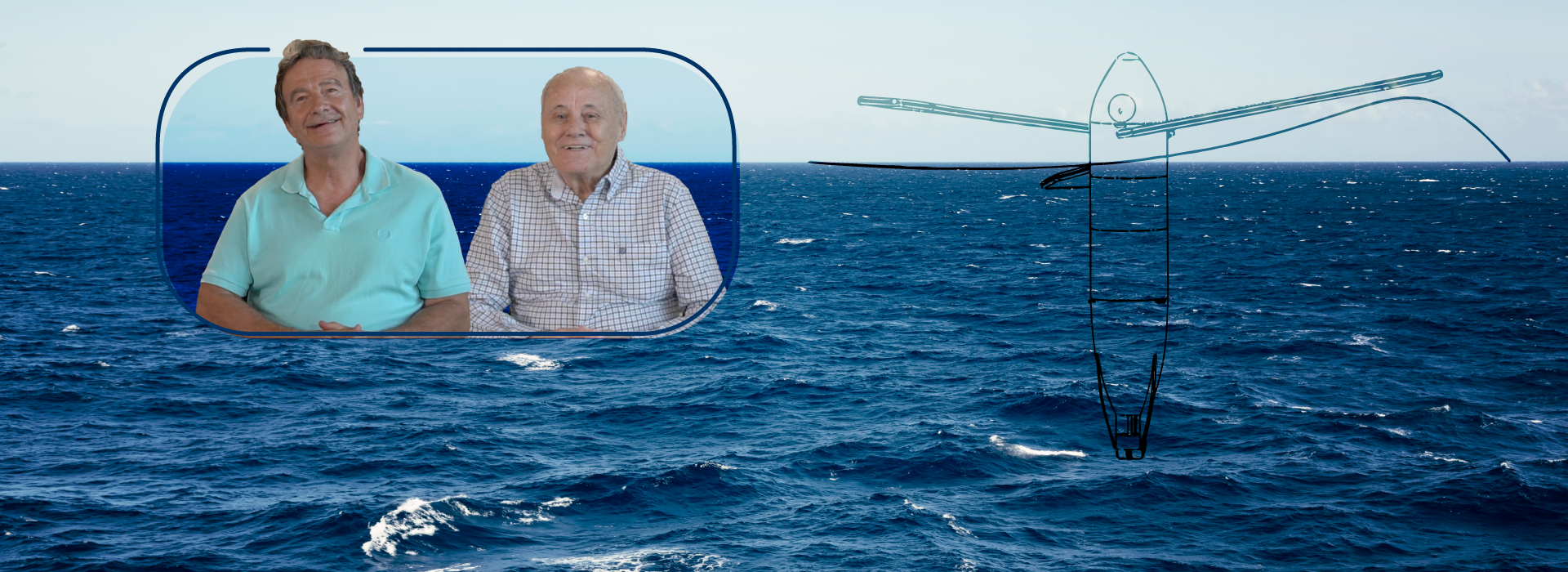12/13/2021
Business Spotlight: Best Friends Winning at Sea
The Odyssey of the Platypus
By Paige Russo and Jultmartin Eugene
The shape of a new, portable, wave energy converter device was inspired by the odd, duck-billed, beaver-tailed, otter-footed mammal from Australia, called the platypus. The invention, created by Engineering Technologies LLC, is designed to create energy in emergency situations on the water.
The Tech Runway venture class 8 company’s business partners, Mark Supal, chief technology officer, and Bob Pauley, chief executive officer, met at a National Science Foundation (NSF) conference in 2011, where they shared multiple business ideas and their passion for science, technology, engineering and math (STEM) education. “We created a company designed to sustain planet Earth and to benefit mankind,” Supal said.
Recently, the two expanded the design, called the Platypus Prowler, for the 2021 National Oceanic and Atmospheric Administration’s (NOAA) Ocean Observing Prize and won $57,000 to build the first prototype.
When they founded Engineering Technologies LLC in 2019, the goal was to design innovative, environmentally-friendly products to preserve the Earth and climate – from the E-Bin, a recycling app that rewards and encourages people to recycle and stop polluting to the Platypus, which provides continuous wave energy during times when solar and wind energy cannot be collected.
Supal and Pauley are currently building various prototypes of the Platypus that are designed to accommodate various water vehicles, such as a boat or a buoy. The first prototype was around five feet long, designed for the average person to carry and stow on their boat and float it in the water for power when needed. The idea was it could be used as a backup energy supply, especially in emergency situations to power light sources or filter clean water. Compared to other larger-scale, permanently structured energy sources, the Platypus’ design can float anywhere to provide a small source of energy. Another version of the prototype was designed to be installed inside of a buoy, used to power weather instruments, navigational lighting, or as an at-sea charging station for passerby boats.
The two entered their platypus design in the 2020 National Renewable Energy Laboratory’s Nationwide contest, which wanted a device that could desalinate seawater only using wave energy converter technology. Although they did not win the competition, they were inspired to continue developing the technology and decided to come to FAU for help.
In 2020, they applied for FAU Tech Runway’s venture class 8 Launch Competition to advance the development of the Platypus. “With the ocean being so near to FAU and with the various professionals who specialize in ocean engineering at FAU, we thought it was an excellent match for Platypus development and support,” Supal said. They were introduced to many potential customers through I-Corps training and made many connections to developers, investors and expert mentors.
Through Tech Runway’s mentor program, they were introduced to Florida’s Small Business Development Center (SBDC) at FAU to apply for a Small Business Innovation Research grant funding and received money to further develop the Platypus. “Tech Runway and the SBDC have been instrumental in pointing us in the right direction,” Pauley said.
Their latest product, the Platypus Prowler, expands their former design. It’s an autonomous underwater vehicle (AUV) that will hold the Platypus inside, to continuously operate long distances in the ocean. It will be a self-charging AUV that will assist in underwater mapping and surveillance. This model stands apart from other remote AUV’s because it can harvest power from ocean waves unlike a solar or wind renewable energy source.
Supal and Pauley are working with many people on this project, including a model submarine designer who has constructed specialized AUV’s for Disney and NASA. With the $57,000 prize money from NOAA, they hope to build the prowler by July 2022.
By winning the 2021 NOAA Ocean Observing Prize, Supal and Pauley will now advance to the next phase of the competition, the BUILD Contest where they will test their prototype in a controlled environment with realistic ocean conditions. Through the BUILD Contest, the business partners can advance to the SPLASH Contest to assess the Platypus Prowler’s performance in real-world conditions in Spring of 2023.
“We have many connections with people in Washington D.C., through SBDC and by being Distinguished Albert Einstein fellows,” Pauley said. “We are extremely hopeful that we will make something successful in the not-too-distant future.”
If you would like more information, please contact us at dorcommunications@fau.edu.
Florida SBDC at FAU Business Success Story

The Florida Small Business Development Center (SBDC) at Florida Atlantic University helps business owners Robert Pauley and Mark Supal, obtain capital to start their business Engineering Technologies, LLC and their product the Platypus, a device that produces energy from ocean currents to power and recharge machines at sea.
Watch the video here.
